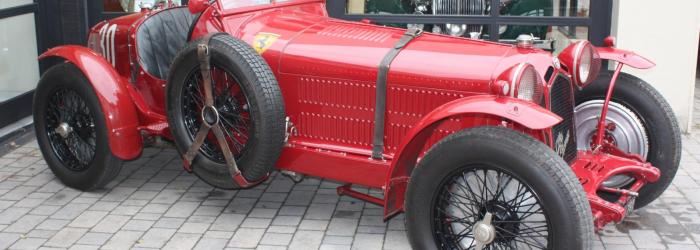Peter Groh v Jim Stokes Workshops Ltd

Wilmots acted for Peter Groh in a High Court claim for damages against Jim Stokes Workshops Ltd for work carried out to an Alfa Romeo 6C chassis, to convert it to take an Alfa Romeo 8C 2.3 engine, which JSW Ltd had built for Mr Groh.
Mr Groh gave the Alfa 6C chassis to JSW Ltd in early 2012 so that they could carry out modification work to take the 8C engine. The modification required the chassis to be shortened slightly and narrowed in order to accommodate the different sized engine. Mr Groh was expecting a bill of between £10-15,000 for this work.
Although JSW Ltd sent out some invoices after they had been working on the chassis for a couple of months, they sent them to the old address of Mr Groh. When they finally caught up with him some 4 months into the work, it was apparent to Mr Groh that something had gone badly awry. The eventual bill that he landed up with was £127,000.
It appeared that JSW Ltd had taken it upon themselves to carry out an entire restoration of the chassis to build it up into a rolling chassis, not something that Mr Groh said he had instructed them to do. In addition he accused them of needlessly substituting old serviceable original parts with new parts without authority.
By the time he called a halt to the work, JSW Ltd refused to release the chassis without full payment, which Mr Groh was compelled to pay. He thereupon took the project away from JSW Ltd.
Mr Groh instructed Wilmots to look into what had occurred and to reclaim a substantial part of the money that had been paid.
The basis of the claim was that JSW Ltd had taken it upon themselves to carry out a substantial amount of work which had not been requested by Mr Groh and effectively to treat the modifications to the chassis as instructions to produce a full restoration without obtaining Mr Groh’s consent. During the course of the investigations Wilmots obtained all the timesheets for the project from JSW Ltd and pointed out a number of discrepancies.
JSW Ltd’s case was that they carried out work to a very high standard and that Mr Groh must have known that it was going to cost rather more than his own original estimate.
An analysis of the worksheets for JSW Ltd showed that their employees claimed to spend at least 9, and sometimes 9 ½ working hours each day on customer’s cars. This was challenged by Wilmots on the basis that it was virtually impossible to achieve anything like that figure every single day when one took into account tea breaks, discussing projects, helping other people out on other projects, moving between projects and so on. A realistic rate, it has been found in these sorts of restoration cases, is that employees spend 6 or 7 hours a day maximum actually working on projects between administrative and other matters.
The proceedings were compromised by JSW Ltd paying Mr Groh £60,000 by way of damages and costs, and paying its own legal costs.
Conclusion
1. Although it is unrealistic to expect restorers to give a quotation in advance, because so much is unknown, it is nevertheless essential to get a rough estimate of the scale of the cost, the time it is likely to take, and to ensure that both the restorer and the customer know exactly what is expected.
2. It is important that the restorer invoices monthly for the work carried out, with a detailed account of what has been done. JSW did this, but unfortunately sent it to the wrong address initially, so Mr Groh had no idea what was occurring in the early stages until it was too late.
3. It is important to ensure at the beginning of the project that a restorer does not do work that he has not been specifically authorised to do.
4. It is unrealistic of restorers to expect anyone to accept that their employees work 9 – 9 ½ hour days with every minute of that time being worked on a specific project. Most solicitors, for instance, work on the basis that from an 8 hour working day about 5 ½ hours is spent on client’s matters.
5. If considering a restorer, ask what his hourly rate is, and whether you will be billed monthly with a proper, detailed breakdown of the time spent.
6. Generally it is cheaper to buy someone else’s restoration, than to do it yourself.
